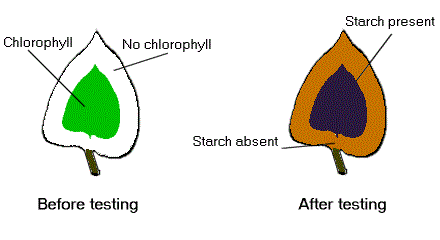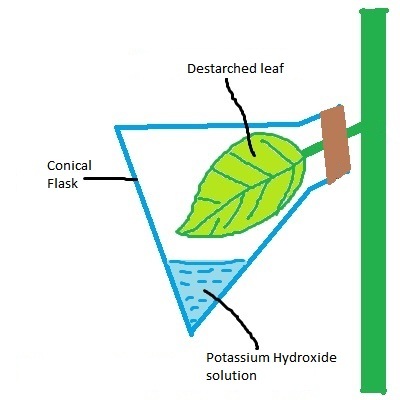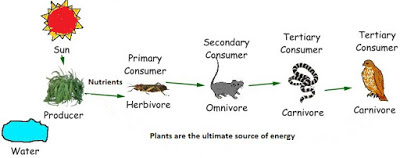7th Grade > Biology
NUTRITION IN PLANTS MCQs
Total Questions : 117
| Page 2 of 12 pages
Answer: Option B. -> nutrients
:
B
Carbohydrates, proteins, fats are the major components of food. Vitamins and minerals are also essential components of food. These componentsare necessary for oursurvivaland growthand they are called nutrients.
:
B
Carbohydrates, proteins, fats are the major components of food. Vitamins and minerals are also essential components of food. These componentsare necessary for oursurvivaland growthand they are called nutrients.
:
Statement: 1 Mark
Explanation: 1 Mark
This statement is false.
Autotrophs only account for the green plants in the world. Since there are so many non-green plants in the world, it would be wrong to say that all plants are autotrophs.
Many plants like the pitcher plant and Venus flytrapare partly autotrophic and partly heterotrophic. Since they grow in nitrogen-deficient soil they trap and digest insects to meet their nitrogenrequirements. Some plants alike Cuscuta are completelynon-green and are parasitic in nature.
:
Each part: 1 Mark
1.Organisms that live together and get mutually benefited - Symbionts.
2. Pitcher plant has bothautotrophic and heterotrophic mode of nutrition.
3. Stomata are thepores through which leaves exchange gases.
:
Experiment steps: 1 Mark each
Inference: 1 Mark
Chlorophyll is extremely important to perform photosynthesis since it is the compound responsible for harnessing sun's energy.
To prove the importance of photosynthesis, the following steps are performed in a sequential order.
Step-1:Take a beaker with boiling water and drop a croton leaf into it. Let it boil for 2 minutes(A croton leaf is a variegated leaf with white and green patches)
Step-2:Take the leaf out of the beaker and place it in a test tube with alcohol. Place this test tube in a hot water bath for 10 minutes. Alcohol decolourises the leaf by removing chlorophyll from it by the process of bleaching.
Step-3:Remove the leaf from alcohol and wash it with warm water. Place it on a tile for further test.
Step-4:Add 2 drops of iodine onto the leaf. The portions which were green i.e. contained chlorophyll turn into bluish-black colourindicating a positive test for starch. The portions which did not contain chlorophyll and did not participate in photosynthesis turns brown because of the iodine solution indicating a negative test for starch.
This experiment proves that food, or starch, is made only in the places of the leaves which are green, or in other words, have chlorophyll in them. So we can conclude that chlorophyll is necessary to performphotosynthesis.

:
Nutrients: 1 Mark
Use: 1 Mark
Simple sugars likeglucose is produced during photosynthesis. Oxygen is produced as a byproduct.
The glucose is used by plants togenerate energy for its metabolic activities. A very small portion of the oxygen produced is used by the plantsfor cellular respiration while therest is released into the atmosphere. This oxygen released into the atmosphere is used by other organisms.
:
Explanation: 1 Mark
Examples: 1 Markeach
Symbiosis is the relationship between two organisms in which both organisms get benefited from each other.
For example, certain fungi live in the roots of trees. The tree provides nutrients to the fungus and, in return, receives help from it to take up water and nutrients from the soil. This association is very important for the tree.
In organisms called lichens, a chlorophyll-containing partner, which is algae and a fungus lives together. The fungus provides shelter, water, and minerals to the algae.
In return, the algae providefood which it prepares by photosynthesis.
:
Explanation: 2Marks
Examples: 1Mark
Carnivorous plantsderive some or most of thenutrients (but notenergy) bytrapping smallanimals andinsects. They are adapted to grow in places where the soil is poor in nutrients, especiallynitrogen. So, to obtain this nitrogen, they depend on other organisms.
Examples: Venus flytrap, Pitcher plant etc.
:
Experiment steps: 1 Mark each
Inference: 1 Mark
For proving the necessity of carbon dioxide for photosynthesis, the following steps are performed:
1) A potted plant is taken and placed in complete darkness for 24 to 72 hours to destarch it.
2) Take potassium hydroxide in a conical flask stoppered with a rubber cork. Insert one leaf (still attached to parent plant) through a hole in the rubber cork. Potassium hydroxide absorbs all the left-over carbon dioxide from the flask.
3) The entire arrangement is exposed to sunlight for 6 hours.
4) The leaf placed in the conical flask with potassium hydroxide solution is tested with iodine solution. This does not turn blue-black.
Inference: The leaf trapped inside the conical flask did not perform photosynthesis as it did not receive any carbon dioxide. This is the reason why it did not answer a positive test for starch.

:
Name of plant: 1 Mark
Name of root: 1 Mark
Cuscuta is the parasitic plant with a yellow slender tubular stem.
The special roots thatpenetrate deep into host plant tissues and absorb the nutrients from them are called haustoria.

















